
Subtle Security Design
The design for the National Gallery of Art Sculpture Garden begins at the street’s edge with the placement of bike racks and sidewalk pavement. Because of the highly valuable works within the garden, perimeter fences and gates were necessary. However, to reduce the impact of these elements, the fence and gate designs pick up on the palette of the plantings as well as the granite of the National Gallery building and the National Archives beyond.
Image: OLIN
Gates Designed to Blend
The wrought iron gates are purposely painted a dark green to blend with the color of the Deodora cedar trees beyond this gateway, and the forms of the fence and gates reference the decorative motifs of the surrounding classical architecture. Visitors are drawn in toward the fountain at the center of the garden.
Image: OLIN
A Series of Outdoor Rooms
At the time of the design of the sculpture garden, the actual works of art to be displayed were not known. Thus, the approach was to create a flexible series of outdoor rooms through which visitors move along curving paths. These garden rooms are meant to act as backdrops to the various sculptures, such as this Claes Oldenburg and Coosje van Bruggen work, titled Typewriter Eraser.
Image: Peter Mauss/Esto
A Green Respite
The sculpture garden is replete with richly layered plantings including trees, shrubs, and groundcovers—a green respite from the openness of the Mall’s simple lawn panels and bosques of trees. Families and school groups often like to sit and picnic on the lawn areas among the sculptures.
Image: Peter Mauss/Esto
An Urban Oasis
The fountain is the heart of the garden and provides a refreshing retreat throughout Washington, D.C.’s sultry summers. The public love to gather along the generous marble edge of the pool and dip their feet in its cool waters, forming a vibrant tableau of people of all ages and backgrounds enjoying this urban oasis.
Image: Peter Mauss/Esto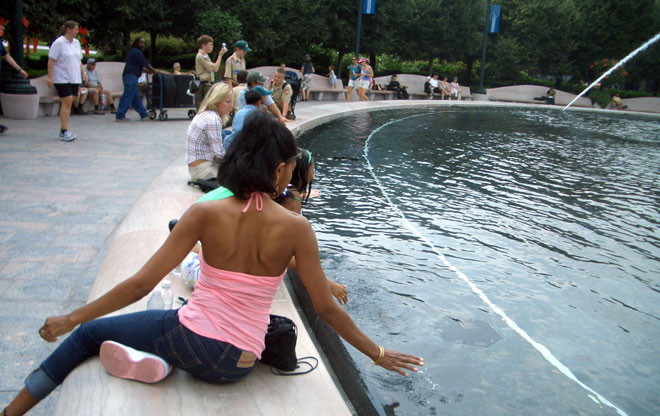
Children Love the Fountain
Children in particular love to interact with the fountain and its pillow-like coping, which was specifically designed to engage the public in this manner. The water originates from a source at the center of the pool and then drains into a slot just within the edge, while jets of water arc from the outer rim toward the center of the pool.
Image: OLIN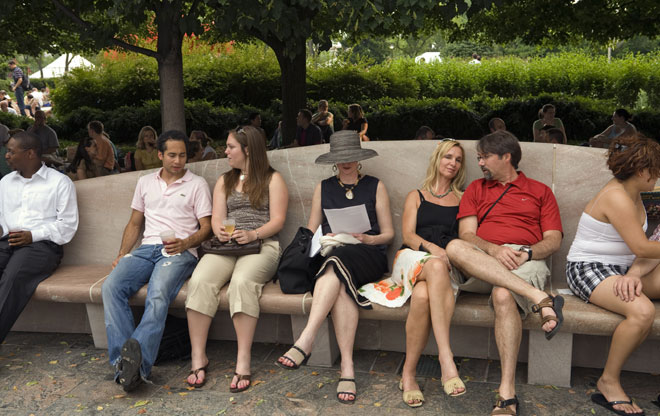
Accomodating Everyone
The garden's benches are made of Tennessee marble -- the same materials that comprises the National Gallery's East Wing. The high backs of the benches were designed to accommodate visitors who prefer to enjoy the fountain from a distance. These are located just under the first row of European linden trees, which were an existing element of the garden, allowing one to linger in the shade of this garden.
Image: Peter Mauss/Esto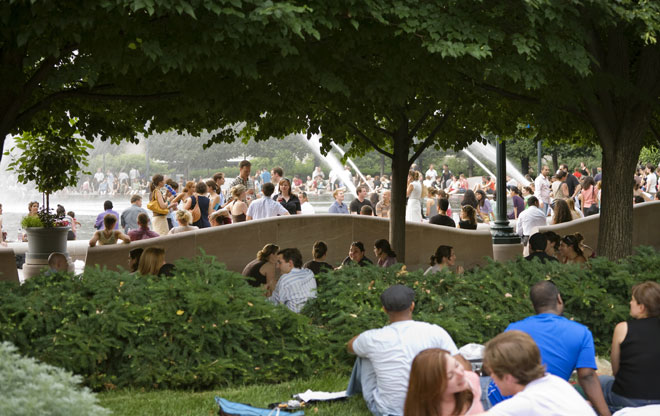
A Place Where People Gather
One of the most rewarding experiences for a landscape architect is to see the public enjoying themselves in a landscape that he or she has designed. On this day in the sculpture garden, hundreds of people gathered on the lawn areas, under the aerial hedge of the European linden trees, on the granite benches, and around the fountain. A particularly popular attraction is the annual Jazz in the Garden series held in the summer.
Image: Peter Mauss/Esto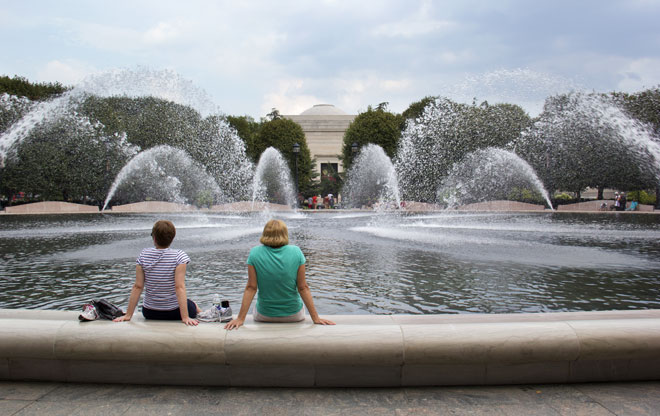
A Truly Memorable Experience
In the spirit of all of OLIN’s projects, the sculpture garden is designed to be a place equally enjoyable and safe for one or two people as it is for large tour groups. The experience of the fountain, with its tranquil pool and graceful jets, is truly memorable.
Image: OLIN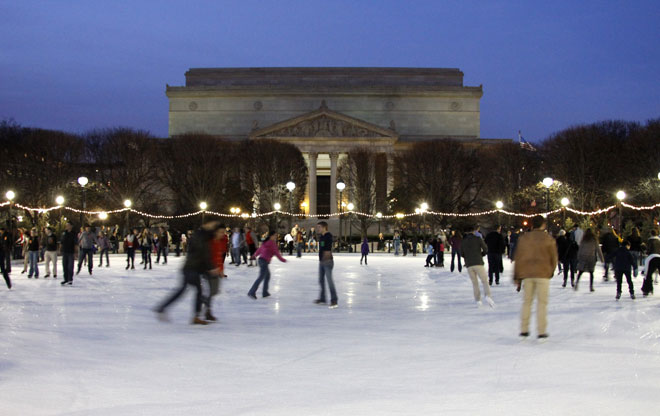
In Winter, an Ice Rink
The garden design purposefully addressed the visitor experience at various times of day and seasons of the year. During the winter months, the fountain is transformed into an ice rink, which has become a successful attraction for both tourists and the local citizens of Washington, D.C.
Image: OLIN